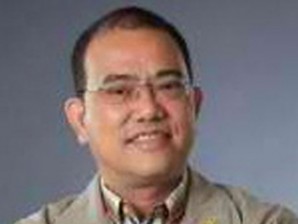
Agrarian Reform Secretary Virgilio de los Reyes. Photo from www.dar.gov.ph/
MANILA, Philippines – The drawing of lots using a “tambiolo” (lottery drum) is the fairest and most transparent system of allocating farmlands to the former workers of Hacienda Luisita, Agrarian Reform Secretary Virgilio De Los Reyes said on Saturday.
De Los Reyes was reacting to criticism and allegations by agrarian reform groups that the “raffle draw” system of allocating farm lots in Hacienda Luisita was “unscientific and idiotic.”
In a statement, De Los Reyes said the drawing of lots was necessary since hacienda farm workers, unlike tenants in rice and corn lands, did not work on specific parcels of land, and thus have no permanent farm lots to claim as their own.
“There are two types of land being covered by agrarian reform: the tenanted land where farmers share the harvest with land owners, and the plantation-type lands where farm workers get a daily wage for their labor,” De Los Reyes said.
“Farm workers in plantations like Hacienda Luisita are given assignments depending on the planting cycle in a year. They are not tenants. They have no fixed land to till, and their tasks vary from time to time, depending on the operational needs of the hacienda owners or plantation managers,” he added.
Reports reaching the Department of Agrarian Reform’s provincial office in Tarlac showed that a number of farm workers, particularly those from organized groups, “had on their own staked claims on specific farm lots of various sizes (many of which are larger than 6,600 square meters), immediately after the hacienda stopped its operations in 2005 and also after the Supreme Court decided to invalidate the previous stock distribution arrangement in Hacienda Luisita last year.”
“The DAR did not clear this, and we did not recognize these unilateral actions in our lot allocation activity,” De Los Reyes said. “To do otherwise would not be consistent with the goal of having an orderly system of lot allocation, and would also be unfair to the overwhelming majority of beneficiaries who opted not to do so.”
He said the drawing of lots using a tambiolo would also prevent disputes that might result from competing claims among farm workers to specific portions of the sugar plantation.
“In Hacienda Luisita, for example, you have more than 6,212 qualified beneficiaries competing for 4,099 hectares of land. Every beneficiary has a preferred choice of location, so one can expect competing claims on specific farm lots,” he said.
“The DAR also considered the fact that there are five farmers’ groups operating in Hacienda Luisita, which have their own choices of location for their members,” he added.
De Los Reyes noted that lot allocation in smaller plantations was easier to manage as farm workers would just agree among themselves on the location of farm lots to be awarded individually.
What complicated matters on Hacienda Luisita, he said, was the attempt by some farmers’ groups to take over and control specific portions of the vast sugar estate.
“We do not give preferential treatment to any one person or group, nor to those who simply happen to have the loudest voice and who had already staked their claim. We must treat all qualified beneficiaries in Hacienda Luisita fairly,” he said.
He also said that the drawing of lots was an “established practice” of the DAR in agricultural lands where the unorganized beneficiaries outnumber the organized ones, as well as in medium-sized landholdings where there is no actual possession by the potential beneficiaries.
Aside from Negros Occidental, this has also been done in the Bicol region, among others, he added.
De Los Reyes said the lot allocation activity in Barangay (village) Cutcut last Thursday was hailed as “very open and transparent” by the local parish priest and other independent observers.
He added that the event was witnessed and documented by many members of the media, some of whom were even invited to draw the names of beneficiaries from the tambiolo.